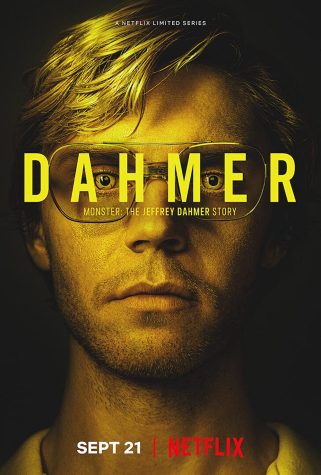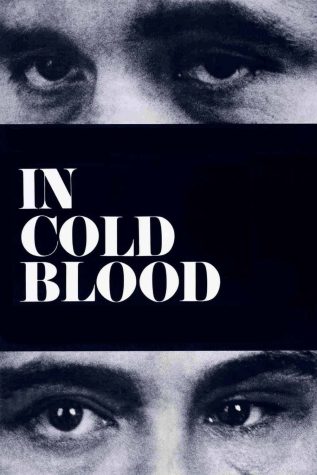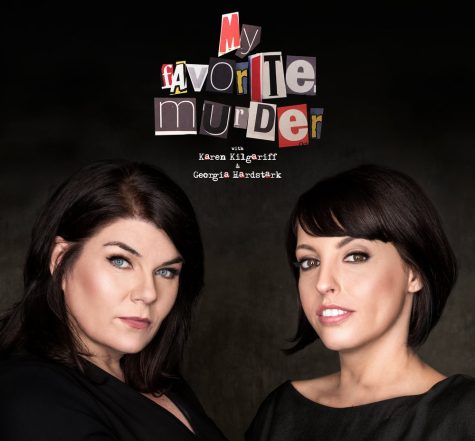True Crime Takes Over
What makes this controversial genre so popular?
Entertainment
One in three Americans say they consume true crime content at least once a week, according to a YouGov poll.
Ted Bundy faced execution by electric chair over 33 years ago, but is still alive through over 11 films, TV shows, and documentaries about his life.

It’s not just Bundy. The violent acts of other serial killers like Jeffery Dahmer and John Wayne Gacy have been similarly preserved through media, the most recent being Netflix’s Dahmer—Monster: The Jeffrey Dahmer Story.
Dahmer’s release created a media explosion that brought Dahmer tons of attention for committing crimes including rape, murder and cannibalism of a confirmed 17 men.
Given its possibly disturbing nature, why do people enjoy the true-crime genre?
“I watch it to understand how the human brain can act,” senior Anna Scharnbeck said. “It’s interesting to see the kind of behavior people are capable of.”
“These shows can be creepy, but I need to figure out why they [the criminal] did it. It’s all about curiosity,” sophomore Kenzie Nachtrieb said.

True-crime entertainment emerged in 1966 with the publication of Truman Capote’s book In Cold Blood, followed by Richard Brooks’ film adaptation. Ever since, the genre has gained traction.
In 2022, three of the top-10 podcasts are Crime Junkie (#2), My Favorite Murder (#5), and Morbid: A True Crime Podcast (#9), according to EddisonResearch.com.
In 2018, Netflix’s Making a Murder became the number one most-binged TV show in America, and this year Dahmer – Monster: The Jeffrey Dahmer Story has become the second most-watched Netflix show ever, with 856.2 million viewing hours.
Nachtrieb and her friends watched Dahmer at lunch together right after it came out in September. “It was the highlight of our day,” Nachtrieb said. “We all really like true crime so it was fun to hang out and enjoy the series together.”

Whether on prime-time TV, Spotify or Netflix, the true-crime genre has captured the interest of a primarily female audience.
According to research done by The Podcast Consumer in 2019, women make up 73% of the true-crime audience.
The media has poked fun at female true crime watchers as in the Saturday Night Live skit “Murder Show.” However, there may be more to the gender gap.
FBI data shows that women accounted for 70 percent of the 1,398 known victims of serial killers from 1985 to 2010, according to Psychology Today.

Sharnbeck believes that more women watch true crime so that they can protect themselves.
“Even though women fear becoming victims of a crime, they’re interested in the genre because it helps them understand how a crime is perpetrated,” crime psychology expert and professor at Illinois Wesleyan University said in a 2022 interview in Vogue.
Despite a strong group of supporters, controversy has grown around the true-crime genre, questioning whether or not it has become harmful.
One worry is that the shows cause unnecessary trauma for family or friends of victims.

“While I think it can be fun to take a deep dive into the mind of a serial killer, it’s important to honor and respect the victims and their families,” senior Nora Darradji said. “When this doesn’t happen, it can be very disrespectful to their legacy.”
“It puts people who are close to victims in a difficult position to watch their loved ones being killed in a horror movie. That could bring back so much trauma,” senior Elizabeth Jackson said. She also added that many family members or survivors are not asked for permission or even notified before the media is released.
Rita Isbell, sister of Errol Lindsey, one of Dahmer’s victims, said in an interview with The Daily Mail that she was never made aware that Netflix was making a series about the killings. A scene where she yelled at Dahmer in court for torturing and killing her brother was recreated in the series, something that her cousin Eric Perry did not approve of. “It’s retraumatizing over and over again, and for what?” he wrote in a Twitter post.
Critics also note issues revolving around representation in storytelling.
After watching Dahmer, Temple University Sociology Department Chair, Dr. Dustin Kidd noticed that, as the name suggests, the show was centered around the criminal with only a few victims’ stories in the entire show.
“Victims get somewhat more attention when they are people with class and race privilege,” Kidd said via email. “For instance, the season of American Crime Story that focused on the assassination of Gianni Versace gave a lot more voice and screen time to the victim than other episodes.”
The bulk of serial killers are white men. Kidd believes that the overall interest in serial killers may have levels of racism “baked into it because audiences wonder how a white man could possibly turn bad.” He identifies this as being the reason the focus of serial killer documentaries is on the killer rather than the victims.
There is also a lack of privacy with any non-fiction entertainment. Kidd mentioned that the sex lives and personal interests of victims are “treated as fair game for storytelling, without regard for their children who might see it.”
According to Kidd, many producers use “structurally reproductive agency” when making true crime shows. This is where the storyteller has the agency to construct the story, but the outcome reflects what audiences already believe.
“Dahmer and other TV shows are dramatized versions of real events,” Jackson said, “they may be non-fiction, but still are never the full story.”

Producers are also looking to make money when they create shows for the public. This influences the actors they choose, the plot lines they follow, and the media format that is created.
Scharnbeck said that when watching true-crime TV, it is important to remember it is created to appeal to audiences. “They cast people who are attractive so that it draws attention to their product and makes money.”
“The media constructs notions of beauty and then largely employs actors who fit that notion. The attractiveness of an actor or serial killer likely makes us more sympathetic and builds on various dimensions of implicit bias, which is itself a system of media construction,” Kidd said.
Jackson thinks that public opinions of criminals can become separated from the crimes they committed simply due to their looks in true-crime media. “When you choose an actor who is conventionally attractive to play a serial killer, you are setting them up to be romanticized,” she said.
Darradji agreed, stating that “like most things in today’s society, physical attributes, unfortunately, play a big role in popularity.
Anyone, including myself, can minimize the horrors of crimes when watching a glorified TV version,” she said.
Regardless of possible negative impacts, it does not look like true-crime production will be slowing down anytime soon.
“It’s not a bad thing to like crime TV,” Scharnbeck said. “If you are able to keep crime and entertainment separate there is no harm; however, when people develop an obsession and paranoia it can become concerning.
It is really important to keep that balance.”

Eavan Driscoll is a senior at Albemarle High School in Virginia and will be attending Virginia Tech in the fall. She is a captain of the field hockey team...










